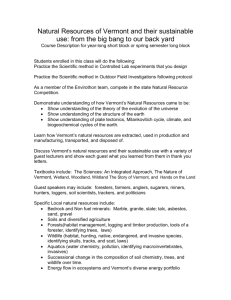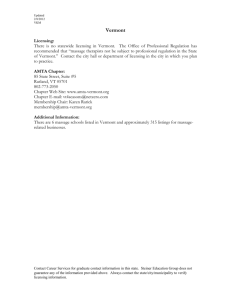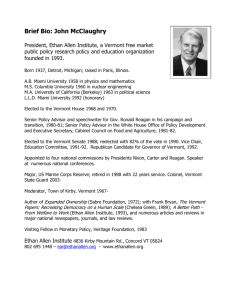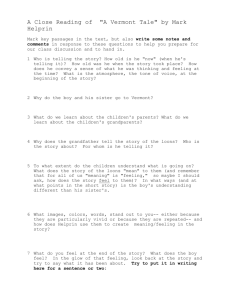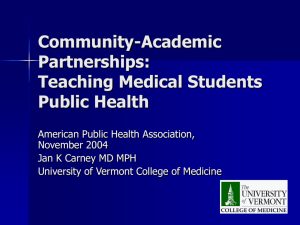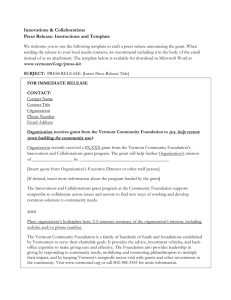UPDATE: Summary of February 18 2016 Meeting of the Blue Ribbon
advertisement
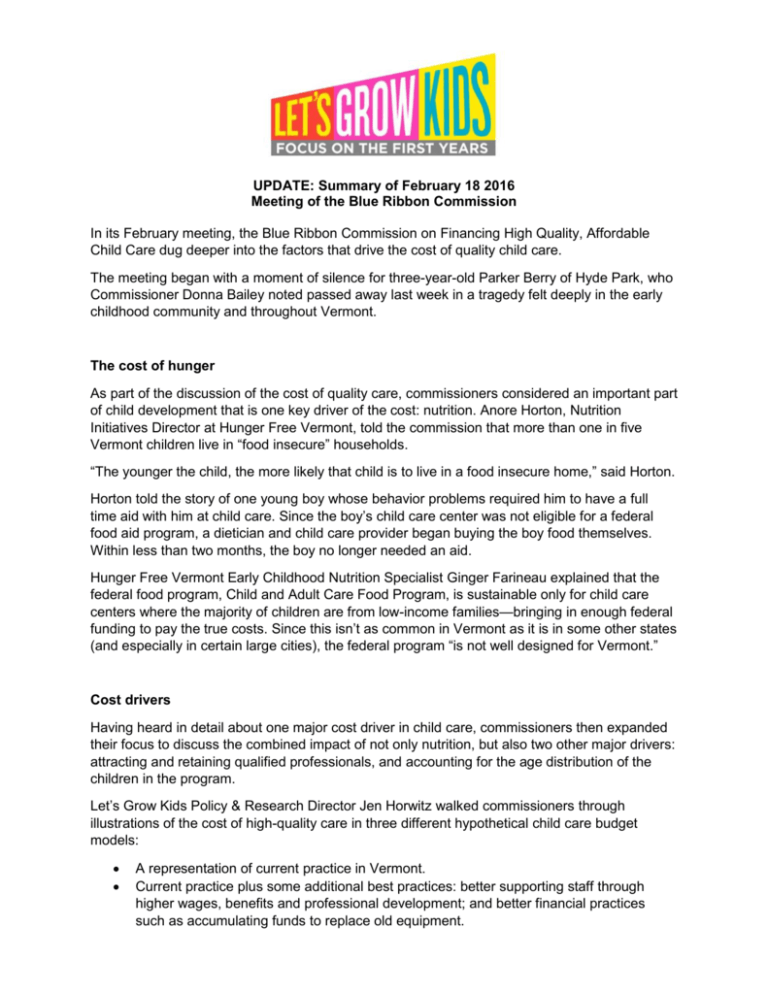
UPDATE: Summary of February 18 2016 Meeting of the Blue Ribbon Commission In its February meeting, the Blue Ribbon Commission on Financing High Quality, Affordable Child Care dug deeper into the factors that drive the cost of quality child care. The meeting began with a moment of silence for three-year-old Parker Berry of Hyde Park, who Commissioner Donna Bailey noted passed away last week in a tragedy felt deeply in the early childhood community and throughout Vermont. The cost of hunger As part of the discussion of the cost of quality care, commissioners considered an important part of child development that is one key driver of the cost: nutrition. Anore Horton, Nutrition Initiatives Director at Hunger Free Vermont, told the commission that more than one in five Vermont children live in “food insecure” households. “The younger the child, the more likely that child is to live in a food insecure home,” said Horton. Horton told the story of one young boy whose behavior problems required him to have a full time aid with him at child care. Since the boy’s child care center was not eligible for a federal food aid program, a dietician and child care provider began buying the boy food themselves. Within less than two months, the boy no longer needed an aid. Hunger Free Vermont Early Childhood Nutrition Specialist Ginger Farineau explained that the federal food program, Child and Adult Care Food Program, is sustainable only for child care centers where the majority of children are from low-income families—bringing in enough federal funding to pay the true costs. Since this isn’t as common in Vermont as it is in some other states (and especially in certain large cities), the federal program “is not well designed for Vermont.” Cost drivers Having heard in detail about one major cost driver in child care, commissioners then expanded their focus to discuss the combined impact of not only nutrition, but also two other major drivers: attracting and retaining qualified professionals, and accounting for the age distribution of the children in the program. Let’s Grow Kids Policy & Research Director Jen Horwitz walked commissioners through illustrations of the cost of high-quality care in three different hypothetical child care budget models: A representation of current practice in Vermont. Current practice plus some additional best practices: better supporting staff through higher wages, benefits and professional development; and better financial practices such as accumulating funds to replace old equipment. Current practice plus a large number of best practices: The best practices described above plus additional best practices such as paying qualified professionals the salaries they would make in schools. The illustrations came from a working group that included representatives of Let’s Grow Kids and our sister organization, Vermont Birth to Five, along with the Vermont Community Loan Fund. “Our hope is that this work will be used as a tool to strategically think about the tough choices providers face when they try to make their budgets work,” Horwitz said. “The important thing to understand is that the current situation is causing attrition of qualified providers,” said Melissa Riegel-Garrett, Pre-K Coordinator at the Department of Education. “Not a day goes by that I don’t hear about a qualified person moving on—and usually to the schools, where there are better salaries and benefits and vacation.” Julie Cadwallader Staub, Grant Director for Vermont’s Early Learning Challenge—Race to the Top grant, urged the commission to use the financial tool created by the work group as part of its exploration of the cost of quality. She suggested including use of the tool in the requirements of the Request for Proposals (RFP) from consultants who will dig deeper into these issues for the commission. The commission agreed to reconvene its “Definition of Quality” subcommittee once more to consider how to include this work in the RFP. That subcommittee, including Commissioners Laurel Bongiorno and Paul Behrman, reported on their work with a group of stakeholders to begin drafting a definition of “high-quality care” that is based on several national models and encompasses four areas: Child health and safety Early care, education and child development Family and community engagement Leadership and management systems. The commission’s next meeting will be Thursday, March 17, 10 a.m. – 12:30 p.m. in the Fourth Floor Conference Room of the Pavilion Office Building in Montpelier.

